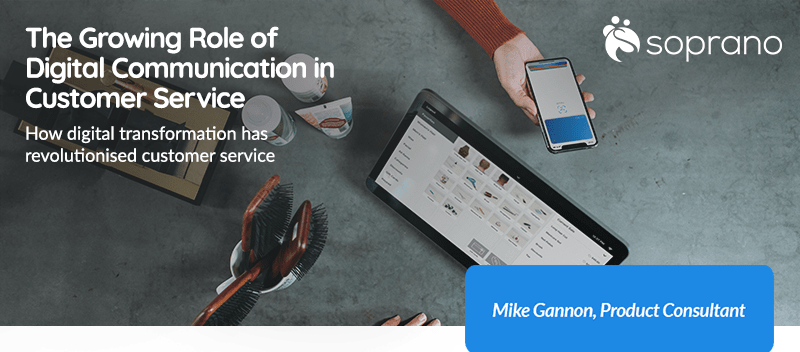
What does good customer service look like to you? At a broad level, the answer to that question is changing – and fast – with the help of digital communication.
Until very recently, human contact was seen as the gold standard for customer service; ideally face-to-face, or over the phone where an in-person interaction wasn’t possible. But that’s no longer the case.
According to research by Facebook, over two-thirds (67%) of people increased their use of instant messaging services in the last two years. By contrast, only 38% increased their face-to-face interactions, and even fewer (37%) made more phone calls.
This shift in communication preferences has demanded an equivalent shift from customer service departments. They are now expected to offer a wide variety of channels to their customers, including voice calls, SMS, instant messaging, video calling and more.
This larger suite of channels, many of which generate valuable data, has seriously increased the complexity of delivering, managing and capitalising on customer communications. At the same time, contact must be made easy and response times fast if an organisation is to enjoy customer service success.
How digital transformation has revolutionised customer service
You visit a company’s website, find their Facebook page or comment on an Instagram post. You get into an instant conversation with the brand, asking questions to find out more about it.
The ability to have a real-time relationship with any brand you choose is a very recent development, and one that’s been driven by the desire for brands to create comprehensive and immersive customer experiences. This desire has in turn been driven by digital transformation, which offers the tools to make it possible.
It used to be that brands would contact the consumer, but now it’s the consumer calling the shots. But this isn’t at the detriment of the brands, who use data to efficiently move these initial interactions to more meaningful conversations.
Perhaps the most surprising thing is how contactless this process can be for a brand, thanks to the increasing use of chat-bots and other AI technologies to do what has always been seen as the most human of jobs. Oracle predicts that conversational AI-First will supersede ‘cloud-first’ and ‘mobile-first’ as the most important, high level imperative over the next decade, with deeper analytics being used to drive personalisation.
Add in low code application platforms, which make it easier to connect anything and everything, and the digital customer service revolution appears to have only just started.
Real world examples of modern customer service done right
To my mind, two companies stand out in the field of touchless digital communication experiences: Uber and Domino’s.
Uber isn’t just an app that lets you order a taxi. It’s a stunning collection of seamless and touchless digital communication experiences, delivered across multiple channels. When all of these disparate parts come together, they make ordering, communicating with and paying for a taxi incredibly easy.
Like Uber, Domino’s challenge was to reimagine the ordering process. They decided to focus on giving their customers the ability to ‘order a pizza anywhere‘, whether through Google Home, Alexa, Slack, Messenger, text, tweet, car (Ford Sync), smart TV, smart watch, or the more traditional phone call, desktop, or smartphone channels. They have made the process as touchless as possible, and, as always, deliver to your door.
These forward-thinking companies have broken down barriers that many in their industries wouldn’t have even seen. It shows that modern customer service demands the sort of out of the (pizza) box thinking that these brands have demonstrated.
The role of CPaaS in delivering modern customer service
A communications platform as a service (CPaaS) is designed to simplify the delivery of digital customer service. Such a service integrates communication features into applications, allowing end users to connect through the channel of their choice.
A single CPaaS API can connect multiple channels, enabling brands to easily manage their customer communications whether via SMS, email, RCS, WhatsApp, Viber or another channel or platform. This integration also allows a brand to nominate a failsafe channel – if a customer can’t be reached on the first, they are automatically contacted on a second. Messaging can be personalised to both the customer and the channel, allowing brands to offer better experiences.
Soprano Connect is an example of one such CPaaS API. It brings together multiple channels including SMS, email, RCS, WhatsApp and Viber, allows you to personalise messages in real-time or in batch mode, and offers a simple, no-code approach for creating this personalised content.
The future of customer service has perhaps come a little faster than many bargained for. But in Uber, Domino’s and Soprano Connect, there are a number of examples of how you can not only adapt to this future, but thrive in it.
Interested in CPaaS solutions?
